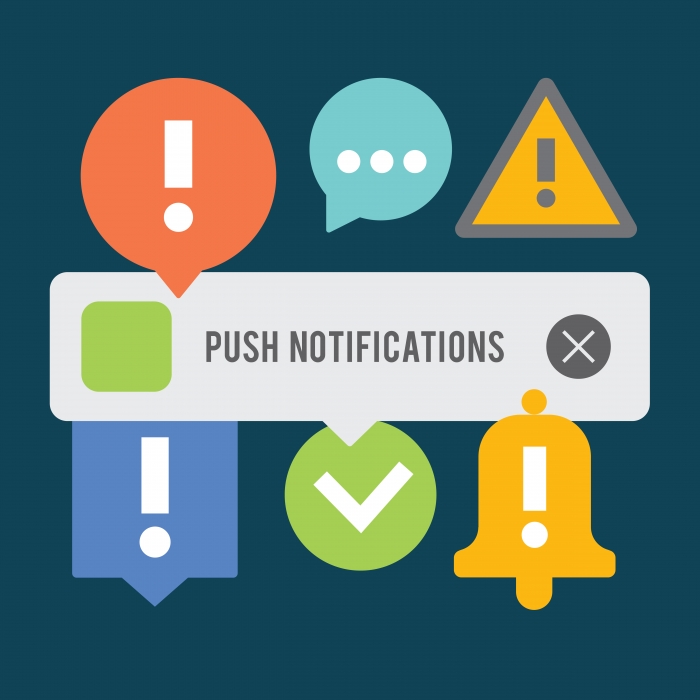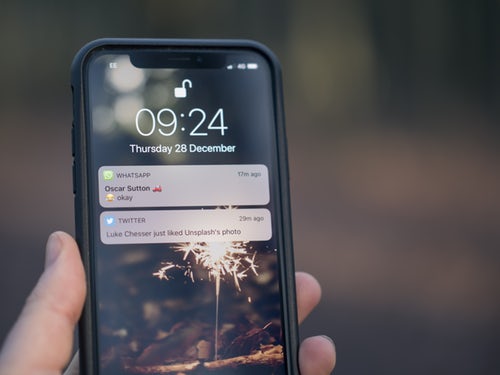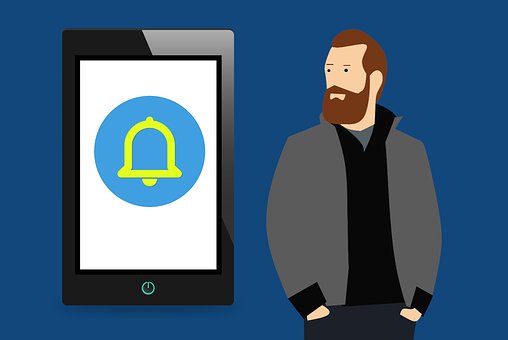
What are Push Notifications?
Push notifications are messages sent through a mobile device, that will reach their audience anywhere and at any time. The publisher (sender) can send them at any time and are independent of any website, meaning the recipient does not have to be on a specific website to receive the message.
Push notifications look like SMS text messages, but would only be received by those who have previously agreed to receive such notifications through an app. All mobile platforms like Android, Windows, IOS, etc., can support push notifications.
Publisher Usefulness

Push notifications can provide a lot of value and convenience for the app user. Users can be notified of several different things like weather, traffic, sport scores, news, flight information, etc.
They give the publisher a direct way to “speak” to their audience. The publisher’s message won’t be stopped by spam filters or missed in inboxes like an email might.
The publisher can direct actions towards a particular product to increase sales, improve customer service, send receipts, and convert new users to the app, just to name a few uses.
The ability to target specific segments of the publisher’s user base, makes it more appealing than text messages.
The publisher is able to organize the identification of their users, as well as have an easy interface within which they are able to write, target and send their messages.
User Acceptance

Basically, users see push notifications as pop-up alerts on their mobile device, no matter what they are doing at the time. This could be annoying, but users have complete control and can easily turn them off it becomes bothersome.
Users install the apps because they do want to be kept abreast of whatever is happening in their industry of interest. If push notifications don’t provide some sort of value, users can and will uninstall the app.
While push notifications and text messages appear quite similar, people sign up for push notifications because the shortened message of a push notification will bring them directly to the app that sent the message, not the text message app. The push notification app eliminates the “middle-man” of the text message app, providing time-saving convenience.
Push notifications are free to receive, which is not always the case for text messages. So, for those people with limited text message plans, they are a less expensive way to receive valuable information.
Users accept push notifications because they can immediately identify who the message is coming from, (an app they have installed on their mobile device) again, not always the case with text messages.
PUSH NOTIFICATION USAGE STRATEGY
Push notifications are being used more regularly, however, using them effectively can be tricky.
Compared to other forms of marketing, push notifications are responded to at a higher rate.
Because users have to opt-in, while also having the ability to opt-out, the user has control over what will happen. There is less risk of a publisher appearing annoying to a user, because the user has chosen the app and can also opt-out at any time.
For the publisher, the notifications can create greater application engagement, keeping the publisher in the user’s mind and improve retention rates.
While keeping the user engaged with notifications, being cognizant to not overload the user with too many notifications is an important strategy. Sending too many notifications is the fastest way to have a user turn you off.
As a publisher, you must be selective in the notifications you send. There is research out there that states 32% of app users will completely stop using an app if they get more than 6 push notifications in a week. Too many messages will cause an unwanted negative association with a brand and app.
Fortunately, push notification can be sent based on several different parameters, with location being one of the most popular. An example of using location as a parameter would be sending out a notification of a special deal for a business when the user is within a predetermined distance.
The ability to send out personalized push notifications is a great strategy as well. If you’re a retail publisher with a mobile app, you can send a valuable notification based on purchase history.
Final Thoughts
First, as a user, push notifications should be considered a good thing because it’s targeted, direct information that you have asked to be notified about by opting-in. Second, as the user, you’re in total control because you can opt-out whenever you want.
Push notifications are an excellent marketing vehicle for publishers. As pointed out earlier, push notifications can help a business and its app stay in the user’s mind for better retention.
The popularity of push notifications over text messages is justified as long as you don’t send too many, too often. As a publisher, use location as a parameter when creating a push notification to guard against annoying your users.
Using push notifications, in the right manner, will help you to increase your customer engagement, acquisition and retention.
As a publisher, the key is to provide value to your receptive users, without annoying the users who may not be quite as receptive.
Join shareasale.com, Earn Cash!
